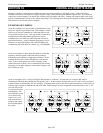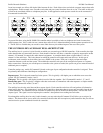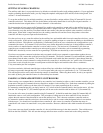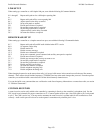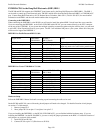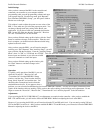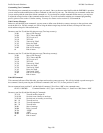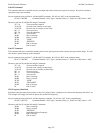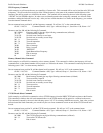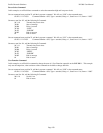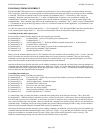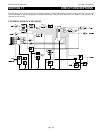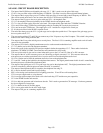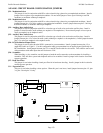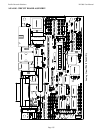
Pacific Research Solutions RI-300e User Manual
Page 128
VFO Frequency Command
In this example, we will assume that we are controlling a 2-meter radio. This command will be used to load the radio VFO with
a frequency. We will use the first two digits of the 2-meter frequency as the name of the command and the balance of the
frequency data will be passed as a wildcard to the macro. The command will be entered by the user in the following syntax
“14652#2” for 146.520 MHz simplex. In order not to accidentally transmit after issuing this command, we will turn off the
transmitter, making the link radio receive only. After you have verified that there is no traffic on the frequency, you can then
issue the transmit command above.
On user command store position 19, add the frequency command. We will use “14” as the command name.
62 019 3 1 100 14 Command Number = 019, Type = wildcard, Group = 1, Start Line = 100, Name = “14”
On macro start line 100, add the following S-Commands
96 2 14B00 Frequency with 14 plus any digits following command name (wildcard)
35 2 1 0 Turn on auxiliary input #2
31 01 070 Set clock reset courtesy to two beeps
31 03 070 Set clock not set courtesy to two beeps
96 1 1 1 Turn on receiver
96 1 2 0 Turn off transmitter
96 1 7 1 Turn on radio
30 001 Start of message
30 008 Delay 1 second
30 455 “RECEIVE”
30 031 Speak Remote Base Frequency
30 002 End of message
64 End of macro
Memory Channel Select Command
In this example, we will build a command to select a memory channel. This command is similar to the frequency wild card
command above, as the channel number will be passed as a wildcard to the macro. This command is entered by the user in the
following syntax “*04 1” to select memory channel 1.
On user command store position 20, add the channel recall command. We will use “*04” as the command name.
62 020 3 1 105 *04 Command Number = 020, Type = wildcard, Group = 1, Start Line = 105, Name = “*04”
On macro start line 105, add the following S-Commands
96 5 B00 Recall memory channel plus any digits following command name (wildcard)
35 2 1 0 Turn on auxiliary input #2
31 01 070 Set clock reset courtesy to two beeps
31 03 070 Set clock not set courtesy to two beeps
96 1 1 1 Turn on receiver
96 1 2 0 Turn off transmitter
96 1 7 1 Turn on radio
64 End of macro
CTCSS Encode Select Command
In this example, we will build a command to select a CTCSS frequency from the DHE CTCSS table and turn on the Encoder.
This command is similar to the wild card command above as the CTCSS number will be passed as a wildcard to the macro.
This command is entered by the user in the following syntax “*05 12” for selecting 100.0Hz tone encode. Later, after you have
built and tested the listed commands, you can add on your own 4 more commands to turn on and off the CTCSS encode and
decode.
On user command store position 21, add the CTCSS encode command. We will use “*05” as the command name.
62 020 3 1 110 *04 Command Number = 021, Type = wildcard, Group = 1, Start Line = 110, Name = “*05”
On macro start line 105, add the following S-Commands
96 3 B00 The CTCSS select plus any digits following command name (wildcard)
96 1 3 1 Turn on the CTCSS encoder
64 End of macro



